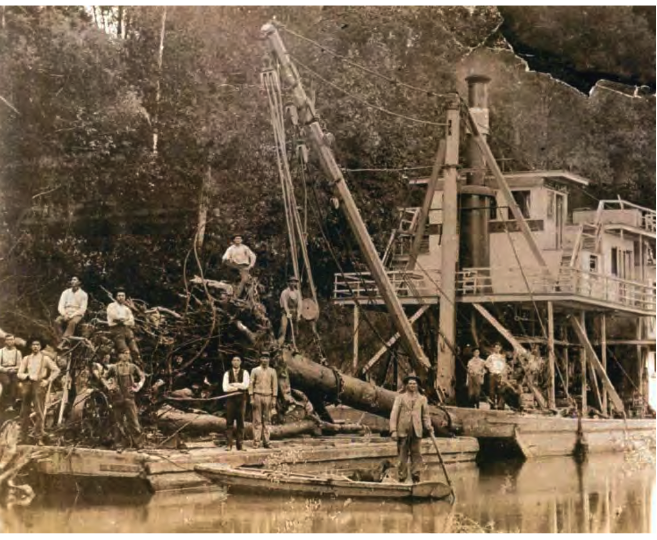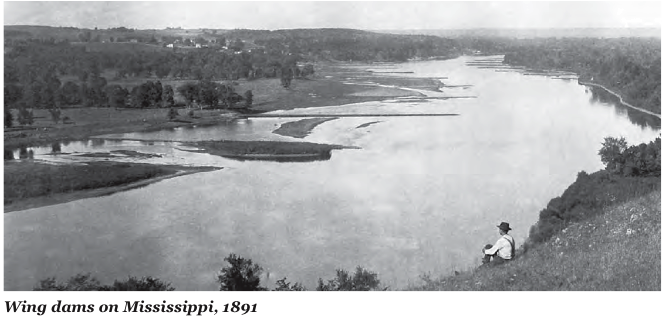
The histories of the St. Louis District, the city of St. Louis, Missouri, and the Mighty Mississippi River are intertwined and cannot be separated. The story of the St. Louis District begins with the rich and legendary history of the river.
The Mighty Mississippi River, over 2,200 miles long, is the second longest river in the United States and the third largest river basin in the world, exceeded in size only by the Amazon and Congo basins. The central portion of the river is known as the Middle Mississippi, a 300-mile reach from Saverton, MO, to Cairo, IL. Further defining the Middle Mississippi are the confluences of three major tributaries, the Illinois, the Missouri and the Ohio Rivers. This area is the responsibility of the St. Louis District.
In the early 19th century, great forests lined the narrow river’s banks of the Middle Mississippi. The Louisiana Purchase in 1803 marked the opening of the West, and river settlements began to grow. In 1817, the first steamboat arrived in St. Louis and the population soared. Steamboat arrivals had increased more than a thousand fold by 1858, turning the river into a superhighway.
As the rich timber resources lining the riverbanks were used to build rapidly expanding settlements, to fuel the steamboat’s boilers, and were cleared for agricultural purposes, the great forests were decimated. The riverbanks became less stable and rapidly deteriorated; the river widened, the banks crumbled and trees fell into the river impeding navigation. During common periods of low water, the Upper Mississippi River had a shallow and swift current, rock ledges, small waterfalls, unchartered shoals and sandbars. These hazards, combined with the fallen trees and the steamboat traffic congestion, made the river too treacherous to navigate safely. Many lives and vessels were lost.

In 1880, Congress directed the Corps of Engineers to correct the disastrous condition of the river by creating and maintaining a safe and dependable navigation channel and returning the river to its once majestic condition. In Life on the Mississippi, Mark Twain put this awesome effort in perspective: “The military engineers have taken upon their shoulders the job of making the Mississippi over again – a job transcended in size by only the original job of creating it.”
After many years, the Middle Mississippi River has been restored to its majestic size and its navigational systems strengthened. The Corps continually examines the biological impact of the navigational structures on the river’s ecosystem. Balancing navigational needs with those of the environment is a prime consideration.